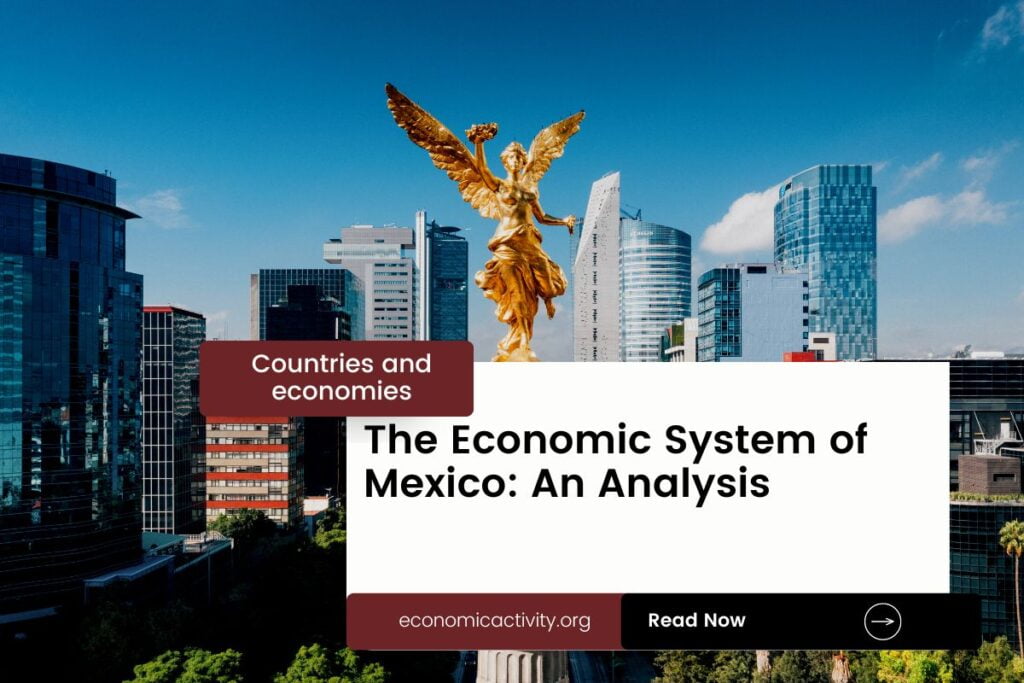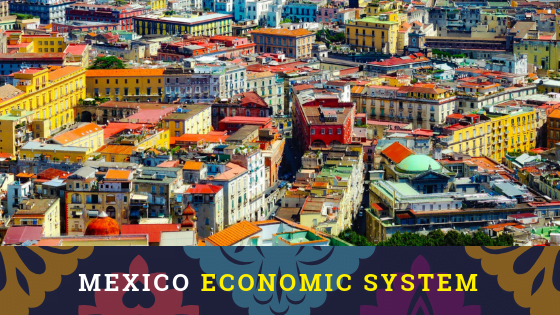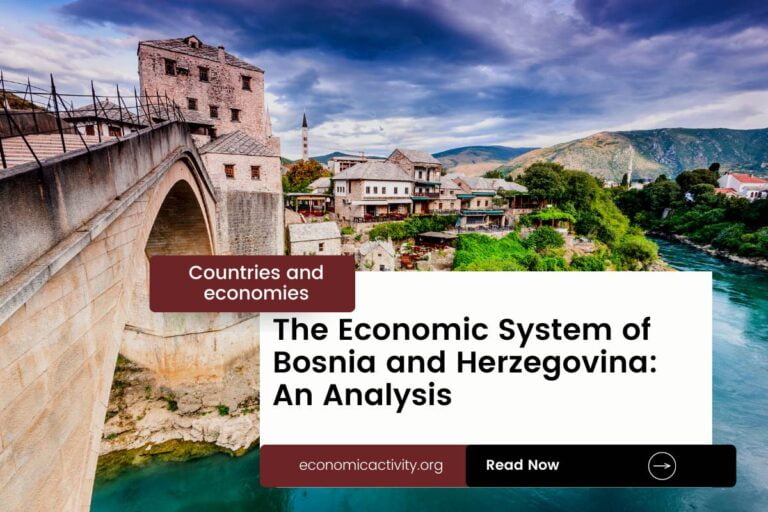Mexico’s economic system is based on a mixed economy. This model combines elements of the market economy and the planned economy. That is, there is a private sector composed of individuals and companies that make free decisions looking for their own interests and a public sector where the State decides how to produce and distribute some goods and services of the economy.
Mexico has a diverse economy with industries such as manufacturing, agriculture, tourism, and oil production. It is the 14th largest economy in the world.
In this way, both types of economic systems coexist in Mexico without one dominating the other, unlike countries such as China, where authoritarianism prevails over the free market.
In Mexico, this balance is regulated by the Constitution, where the rules and operation of its economic activities are established through public, private and social law. For example, private property is regulated by the Constitution.
It could be said that Mexico’s economic system is composed of a series of institutions, markets, laws, agreements, incentives, sectors, coordination mechanisms, and property rights.
Main characteristics of the economic system of Mexico
- Mixed economic system: market economy and planned economy.
- There are private companies and public companies such as PEMEX.
- A productive system focused on exports.
- An economy composed of 3 large economic sectors.
- Private property.
Roots of the Mexican economic system

Mexico’s current economic system is partly the result of the influence that several international institutions have had in the country. These include the WB, the IMF, the OECD, the Inter-American Development Bank, and the WTO through policy recommendations and conditionalities.
This is especially true since the crisis of 1982, the starting point of the establishment of multiple neoliberal policies. These policies sought fiscal consolidation, macroeconomic stabilization, and external balance through privatizations, free trade agreements, labor flexibility, etc.
What do the freedom indexes tell about the economic system of Mexico?
Also, to determine if a country is mainly a market economy or a planned economy, it is useful to examine some economic indexes. For instance, according to the 2022 Index of Economic Freedom, which measures the ability of every human to control his own labor and property, Mexico is ranked 67th globally and 14th in the Americas indicating that the country has a moderately free economy.
In a similar way, the 2022 Freedom House index evaluates the state of political rights and civil liberties globally. Generally, market economies tend to align more with democracy and freedom, while command economies tend to be characterized by greater state control and fewer democratic and civil liberty protections.
Mexico gets a score of 60/100, which qualifies it as Partly Free. Mexico is considered to have a government that does not control what people do, and people can make their own economic decisions, but it is only considered an electoral democracy, lacking full liberal democratic protections.
The Link Between Public Sector Employment and the Economic System of Mexico
An indicator of the extent to which the State is involved in the economy is the number of public sector employees. In Mexico, according to ILOSTAT, the number of public sector employees as a percentage of the total workforce is 12.2% (2021).
In the country’s mixed economy, the number of public sector employees as a percentage of the total workforce varies based on the specific policies and practices adopted by the State. Some economic activities are left to the private sector while others are under government control. The bigger the public sector the closer the economy is to being a command economy.

Conclusion on the economic system of Mexico
Mexico’s mixed economy system is the result of a long history of economic liberalization and privatization, combined with government intervention in key sectors. Its economic system owes much of its current characteristics to the restructuring that the economy has had since the 1980s.
This has allowed for the growth of a vibrant private sector, while still providing the government with the ability to regulate and protect certain industries. This has resulted in a more balanced economy, with a greater focus on social welfare and economic stability.
Currently, the country has a mixed system that combines elements of a planned economic system and a market economy.
More: Top 10 Biggest companies by revenue in Mexico (2023 data)



Leave a Reply